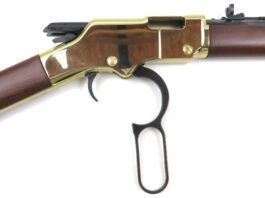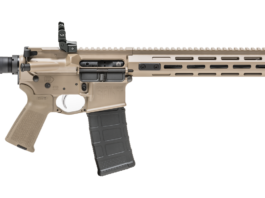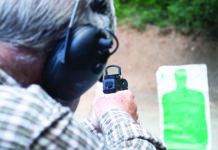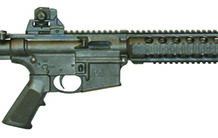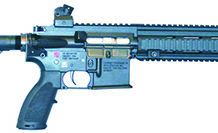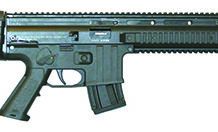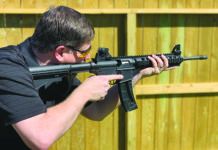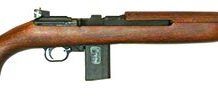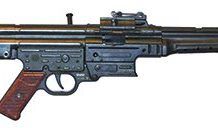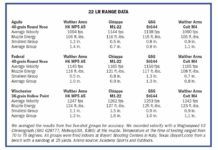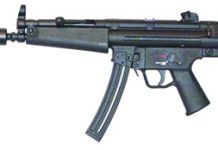Remington Model 7 CDL 26423 308 Winchester
GUN TESTS GRADE: A
$798
According to the Remington website, the Model 700 was introduced in 1962. By our count from that same website, the Model...
Ruger Hawkeye Compact 37139 308 Winchester
GUN TESTS GRADE: B+
$691
There are any number of ways to make a rifle lighter. One of them is to make everything smaller, and that...
Tips for the Older Shooter
We have heard from many Gun Tests readers who have been shooting most of their life but find their chosen handguns, such as the...
Anschütz MSR RX22 22LR
GUN TESTS GRADE: C
$800-$1000
The Anschütz RX22 is not what we usually think of when we think Anschütz. Not a classic target rifle, the Anschütz...
Smith & Wesson M&P 15-22 22 LR
GUN TESTS GRADE: A (BEST BUY)
$500
The last rifle we are testing is a replica of the U.S. M4 service carbine. The M4 is a...
Walther Arms HK416 D145RS 578.03.01 22 LR
GUN TESTS GRADE: B
$583
Our next rifle mimics the Heckler & Koch HK416 (M27). While similar to the AR-15 in appearance, not everything is cross...
ISSC MK22 ISSC211000 22 LR
GUN TESTS GRADE: F
$270
If you’re looking for a SCAR and the RX22 doesn’t suit your fancy, another company imports a SCAR replica in 22...
Replicas of Famous Firearms, Part 2: Take a Pass on ISSC
In part one of our tests of eight 22 LR firearms that resemble famous battle rifles, we examined the Carl Walther HK MP5 A5,...
Chiappa Citadel CIR22M1W 22 LR
GUN TESTS GRADE: F (1st Sample)
GUN TESTS GRADE: C (2nd Sample)
$300
The U.S. Carbine, Caliber .30, M1 is one of the iconic weapons fielded by...
German Sport Guns GSG-StG44 GERGSTG44 22 LR
GUN TESTS GRADE: A (OUR PICK)
$330
The Sturmgewehr 44, commonly abbreviated as the StG44, was one of the earliest examples of what became known as...
Replicas of Famous Firearms, Part 1: Walther, Chiappa, GSG
Our test group included two 22 LR semi-autos from Carl Walther, the HK MP5 A5 and Colt M4, the Chiappa Arms M1 Carbine, and GSG's StG44. One rifle was truest to the original, practical, and fun.
Walther Arms HK MP5 A5 5780310 22 LR
GUN TESTS GRADE: C
$600+
About the original: The HK MP5 is an iconic firearm developed in the 1960s as a 9mm submachine gun and is...





























